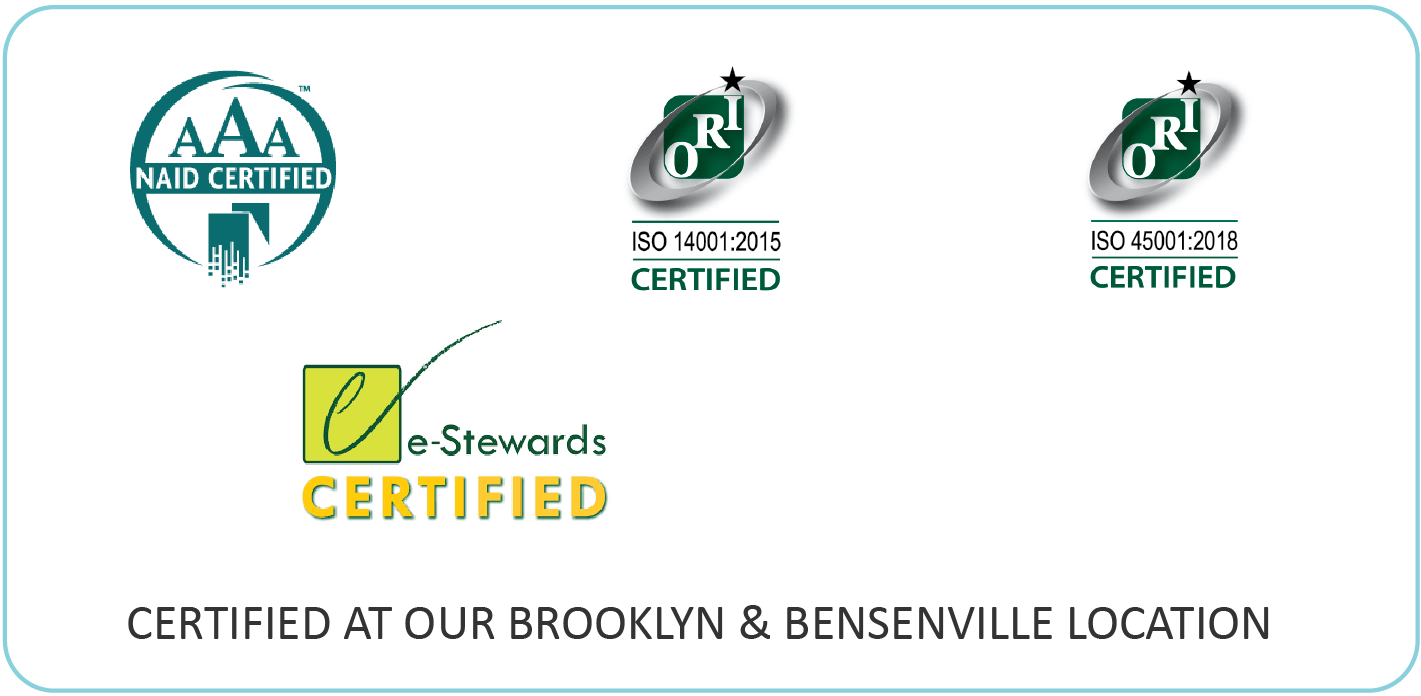Season 2, Bonus Episode – Interview with Richard Greene, Managing Partner at Liquid Technology
Analyzing the IT Asset Disposition Market: Interview with Liquid Technology’s Richard Greene
Steve Sidwell:
Thank you for joining us for a special edition of The Tech Bench Podcast. On this episode, we’re chatting with Richard Greene, Liquid Technology’s Managing Partner. Last week, Arrow Electronics shut down their ITAD sector. I think E-Scrap News did a great job of summarizing what happened. The E-Scrap News article I’m about to read is written by Colin Staub.
(Theme music plays)
Speaker 1:
Global ITAD services, provider Arrow Electronics will close the asset disposition side of its business by the end of the year, after the company experienced two quarters of worsening financial returns. The publicly traded company on July 15th announced its preliminary second-quarter financial results, which showed lower returns than the company had anticipated. As a result, the company is taking a series of “Decisive actions to preserve profits,” according to a release to investors. In one of those decisions, Arrow Electronics elected to close its PC and mobility asset disposition business, called Arrow Sustainable Technology Solutions, which the company has aggressively grown in recent years. In the release, company CEO, Michael Long explaining that, “Business dynamics have changed since we entered the market,” which influenced the closure decision.
Speaker 1:
Arrow, which supplies electronics components and posted a 2018 sales of $30 billion into the ITAD sector about a decade ago. The company quickly grew in the space through a number of acquisitions, an Arrow leader explained during a session at the 2017 E-Scrap Conference. By 2015, the company operated nine ITAD locations in the United States and was expanding globally, including into Singapore. That year, analysis from Compliance Standards, estimated Arrow had a 10% penetration of the U.S enterprise market, with just four companies ahead of it, primarily major OEMs. In 2017, the most recent year the company published a sustainability report, Arrow handled nearly 6.3 million used devices, 44% of which were redeployed, sold or donated for reuse. But recent falling financials led the company to change course.
Speaker 1:
Official quarterly results will not be presented until August 1st, but in a conference call with investors to discuss the preliminary results, the company referenced a figure of about $17 million in second-quarter pre-tax operating losses from the ITAD division. “That was definitely a much bigger loss than what we’d experienced last year,” said Chris Stansbury, the company’s senior vice president and chief financial officer, on the July 15th call. “Last year, the business was closer to a break- even.” “We believe this business is not sustainable over the long term and is no longer aligned with our strategy,” CEO Long said on the call.
Speaker 1:
Arrow anticipates $115 million in charges related to the closure of its ITAD business, in personnel and other costs. The company will no longer receive devices at its facilities after August 5th. According to the release, the company anticipates the wind down of the personal computer and mobility asset disposition business will be substantially complete by the end of 2019. On the investors’ call, Long suggested the company’s exit from ITAD will be accompanied by deepening its involvement in other emerging fields. “We believe this will enable us to fully focus on longer term strategy, to enable the next generation of technologies such as AI, industrial automation, smart cities and vehicles,” Long said. On its website, Arrow noted that despite the ITAD change, the company continues, “To see sustainability as an important element of our overall business strategy.”
Speaker 1:
(singing)
Liquid Technology Weighs in On the ITAD Industry
Speaker 1:
Rich, you have over 19 years of experience in the ITAD industry. Arrow CEO, Mike Long recently said, “We believe this business is not sustainable over the longterm,” and he’s referring specifically to the ITAD industry. Do you agree with that?
Richard Greene:
No, not really. I think it wasn’t sustainable for Arrow because it wasn’t their focus. It was I think the smallest sector of their business. There’s hundreds of viable companies across the world that still do just ITAD, or their focus is ITAD, or it’s a major part of their business.
Speaker 1:
Why do you think Arrow had challenges?
Richard Greene:
I mean from when you read the press release, it sounds like that they were relying on one client in particular that was a major part of the business. And if you read the articles, it sounds like it was Huawei which is a large Chinese company, which has obviously had a lot of challenges lately. And then it seemed that once they were losing money on that business or they were no linger gaining revenue from it, they had to make decisions about their business in terms of what was successful and what’s not. So they’re [inaudible 00:05:19] as a lot of companies do non-core product. And that was always my wonderment about Arrow like, why they decided that this was a good fit to their business. And sure enough, in a fairly short amount of time after making a lot of acquisitions, less than five to seven years, they decided to totally get out of it.
Speaker 1:
Do you agree with their initial strategy of growing through acquisitions?
Richard Greene:
I think that’s a good strategy to grow through acquisitions but the thing is I guess lot of companies now you have to do it well and they didn’t do it. I think there was a lot of client dissatisfaction when the existing company and then they went to a new parent company and got service and the service was not on the same level. I think they had a lot of attrition of staff or they let a lot of staff go and I just don’t think they managed it well. They thought it was something that they could just buy into, not, I think really focus on.
Speaker 1:
In the past, have you worked with any of Arrow’s clients? If so, what’s been your experience with that?
Richard Greene:
Pretty much just what I was just talking about which is as they transitioned to Arrow, a lack of service. I do kind of look at it synonymous with going to maybe your major bank, but it’s fine maybe for your day-to-day banking, but if you’re a business, you’re often going to have special needs. Maybe short timeframes, maybe you have greater security concerns and that they really weren’t filling that bill. So I think they piece by piece people, companies including ours, were able to take clients from them.
Advice for IT Asset Managers
Speaker 1:
What advice would you give to all the ITF asset managers out there who pretty much up until this week were using Arrow?
Richard Greene:
You mean aside from give me a call? I think to evaluate, if they’re looking for new ITAD vendors to really look at the process. I do think sometimes people will do, sometimes people will know to and sometimes people forget to look at a couple of big pieces. One of which is the e-waste component of it. What happens to your waste? What kind of certifications does your e-waste provider have that can provide globally as well as data destruction. Whether they can do on and off site data destruction for you, what kind of standards they’re adhering to. And I would also say how they handle your assets. Are they experienced in all different types of assets? And in one piece, I think some people forget too is logistics. The security of logistics, the efficiency of logistics. I do think sometimes people focus on cost more than the security. And the security is a big piece in terms of the transportation of your assets which some may have data on.
Speaker 1:
So the big pieces you’re saying, it sounds to me like is security logistics, getting that back quickly, back safely, getting the most money on your resale of your assets and then not forgetting to really pay attention to that last piece, which is great, all the stuff that didn’t sell or that they didn’t buy out, what happened to all of that? Where did the actual waste go? All of the commodities and the chemicals and all the scrap. What happened to that? And that’s what you’re saying that’s where those certifications really come into play and know what that downstream looks like?
Richard Greene:
Absolutely. I mean there’s some good certifications out there. People need to follow them. I do think that [inaudible 00:09:05] in particular has done a really good job in tracking and showing people where the assets actually go, even from certified vendors, even from their own certified vendors and then throwing people out if necessary. This is what makes it work. On the e-scrap side which is obviously another story, but I do think that the United States can be a leader here. It’s really the industry which has kind of supported these guidelines more than the government, but however it’s done, it really should be done because there’s a lot of health and safety issues around this.
Speaker 1:
Rich thanks so much for coming on today. I really appreciate it. It’s been great talking with you.
Richard Greene:
Thanks for having me.
Steve Sidwell:
If you enjoyed this episode, please make sure to subscribe and follow us on Instagram, Twitter, and Facebook at the LTTB podcast. If you have any comments, questions, or show ideas, please feel free to email us at thetechbench@liquid technology.net. For show notes, visit liquidtechnology.net/techbench.
Looking for an e-Waste Recycler?
As one of the industry’s leading IT asset disposition service providers, Liquid Technology provides a suite of effective impartial solutions. Discover what to look for in a quality e-waste recycler.


